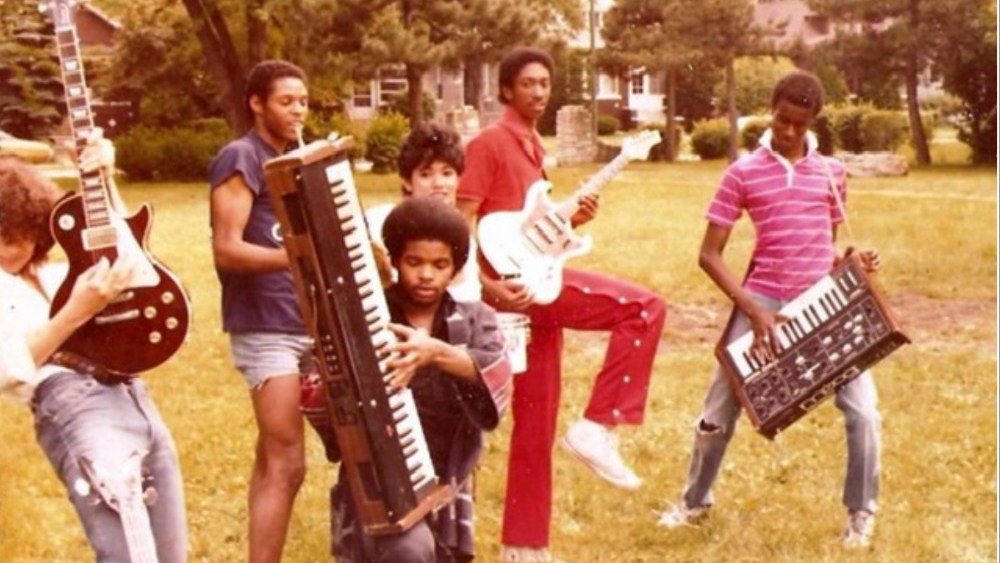Documentarians must perform particularly tricky balancing acts with each new project. The audience expects their work to be richly cinematic, entertaining and surprising; the standards of their profession, too, dictate that they must be fiercely attentive to the facts. Unlike directors working on scripted films, they can’t find an easy fix if the facts don’t suit their story — they must follow the truth wherever it leads.
That’s among the challenges that several field-leading documentary filmmakers discussed at Variety and Rolling Stone’s Truth Seekers Summit on Aug. 14. The work each respective director has made recently diverges from their fellow panelists in style, in subject matter and in approach, but all the filmmakers share a commitment to using the tools of art to reveal stories the viewer may not have expected.
There are interesting concordances between the documentaries on offer. Many, for instance, cover figures and incidents in the history of the entertainment industry. In various cases, familiar faces or images open the door for deeper examination of the ways in which culture shapes us and is shaped by us.
Consider the two new films this year by panelist R.J. Cutler. The director has previously helmed docs about Anna Wintour (“The September Issue”) and Billie Eilish (“Billie Eilish: The World’s a Little Blurry”); in 2024, he released two personality-forward documentaries, “Elton John: Never Too Late” and “Martha.” Both documentaries, like Cutler’s Wintour and Eilish films, rely on the participation of their subjects — in this case, Elton John and Martha Stewart — but do not allow them to control the narrative. It’s Cutler in control of the story as we walk through, say, John’s personal challenges with substances and with accepting his sexuality, or Stewart’s prosecution for insider trading. Both are ultimately stories of resilience, told in different ways, with John’s ebullience showing us what it takes to be a show business survivor and Stewart’s steeliness making clear that she’s endured sexist vitriol and come through the other side.
Panelist Bao Nguyen also has released two films in the past year, both about famous moments in media culture: “The Greatest Night in Pop” is a lighthearted and sweetly nostalgic look back at the production of “We Are the World,” the superstar-driven single that was intended to raise money for and awareness of the victims of Ethiopian famine. “The Stringer,” by contrast, is a hard-nosed investigative look at the true authorship of the famous photo known as “Napalm Girl,” depicting a child burn victim at the height of the Vietnam War. “The Greatest Night in Pop” uses both archival footage and fresh interviews to charm viewers and to make a subtle, insistent case that monoculture moments like “We Are the World” have real value. “The Stringer,” making a claim that credit for one of the most famous photographs of the 20th century was misattributed, also has mass culture on its mind — part of “Napalm Girl’s” power lay in how widely it’s been seen — but delves into thornier matters, too.
Mary Robertson is no stranger to using cultural moments to dig into complicated questions: the doc panelist’s past work, from “Framing Britney Spears” to “Quiet on Set,” has shifted the way we talk about the ethics of entertainment. “The Fall of Diddy,” her latest docuseries, dug into both allegations of violence against Sean Combs and the ways in which his stardom kept him shielded from closer scrutiny. Robertson’s work makes particularly clear the ways in which documentarians must use the skills of a reporter: Finding subjects willing to speak out against a wealthy and powerful figure is a special challenge — but if those people cannot be convinced to speak on camera, then there’s no documentary.
Panelist Elegance Bratton brings a different skill set to his work: While the filmmaker had experience in documentary prior to this year’s “Move Ya Body,” his best-known project is likely the 2022 scripted drama “The Inspection,” starring Jeremy Pope and Gabrielle Union. “Move Ya Body” depicts the birth of music genre house, which was driven in large part by Black and queer creators. It emerged as a counterreaction to the demise of disco music as the 1970s faded and such events as 1979’s Disco Demolition Night in Chicago — in which popular records were showily destroyed by self-proclaimed music purists — sprang up. The creation of an entirely new style of music, and its coming into being as part of a backlash to the anti-disco backlash, is a complex tale, and Bratton’s braiding together the strands into a coherent, compelling narrative speaks to his gifts as a storyteller.
In the past year, panelist Jennifer Tiexiera has shifted between two stories about young people finding their creativity and confidence — one about a famous figure, one a story with slightly less famous participants. “Rebbeca,” Tiexiera’s look at the famous recording artist Becky G preparing to release her first-ever album of regional Mexican music, relies — like Cutler’s work, among others — on the participation of its star and her willingness to dig deep into her thoughts and feelings on camera.
“Speak,” which Tiexiera co-directed with Guy Mossman, depicts five students’ preparations for a high school speech-and-debate competition, and does a funny reverse-“Rebbeca” trick. “Rebbeca” convinces its viewer that within the superstar is a relatable, deeply human person one might meet in everyday life; “Speak” makes five normal (if very high-achieving) teens into superstars.
All of these works are, in their own way, in service of truth — and complicated truth, at that. Things as seemingly light as a pop star’s career or an all-night recording session give way to complicated, startling humanity. It’s fitting that the final director on the Truth Seekers panel is someone whose film’s very title addresses the quest for honesty: “Bodyguard of Lies” (named for the Winston Churchill adage about how mistruths should be strategically deployed during wartime) delves into the public statements officials made during the Afghanistan war, and how far they diverged from the reality on the ground.
Director Dan Krauss must get his arms around a massive story — a decades-long war, one that the public was told was both necessary and winnable, though the film makes the case that it was neither. He does so with a crisp, elegant storytelling style, and no shortage of sorrow.
That’s one element that distinguishes documentary filmmaking from, say, print journalism: Though both practices aim at sussing out fact from fiction, documentary has at its disposal both the tools of art and the ability to practice advocacy or to state a point-of-view plainly, something that most journalists, in pursuit of objectivity, cannot do. One walks away from each project under discussion at this year’s Truth Seekers documentary panel with a crystalline understanding of what each filmmaker believes about his or her subject, even as the ways they express that belief can differ.
What the future holds for the documentary form is anyone’s guess. As the media industry contracts and as potential hosts for adventurous, boundary-pushing work either fall away or grow intimidated under a climate of control and restriction, work like this may grow less common, less well-funded, less able to pursue the story wherever it leads. One hopes that artists like these will continue to find a way to get their stories out; no matter the subject matter, from a disco-demolition night to American foreign intervention, the spirit of inquiry, curiosity and refusal to blink are more urgently needed at this moment than ever before.

